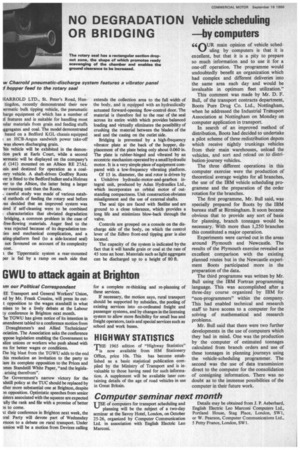Vehicle scheduling —by computers
Page 84

If you've noticed an error in this article please click here to report it so we can fix it.
661-tUR main opinion of vehicle sched
uling by computers is that it is excellent, but that it is a pity to prepare so much information and to use it for a one-off operation. The programme would undoubtedly benefit an organization which had complex and different deliveries into the same area each day and would be invaluable in optimum fleet utilization."
This comment was made by Mr. D. F. Bull, of the transport contracts department, Boots Pure Drug Co. Ltd., Nottingham, when he addressed the Industrial Transport Association at Nottingham on Monday on computer application in transport.
In search of an improved method of distribution, Boots had decided to undertake a pilot scheme of three redistribution depots which receive nightly trunkings vehicles from• their main warehouses, unload the vehicles, and sort and reload on to distribution-journey vehicles.
The three different operations in this computer exercise were the production of theoretical average weights for all branches, the use of the IBM vehicle scheduling programme and the preparation of the order rotation for the branches.
The first programme, Mr. Bull said, was specially prepared for Boots by the IBM bureau staff at Birmingham. It soon became obvious that to provide any sort of basis for planning, branch tonnages would be necessary. With more than 1,250 branches this constituted a major operation.
Experiments were carried out in the areas around Plymouth and Newcastle. The results of the Plymouth exercise revealed an excellent comparison with the existing planned routes but in the Newcastle experiment Boots participated more in the preparation of the data.
The third programme was written by Mr. Bull using the IBM Fortran programming language. This was accomplished after a three-day course organized by IBM for "non-programmers" within the company. This had enabled technical and research staff to have access to a computer for the solving of mathematical and research problems.
Mr. Bull said that there were two further developments in the use of computers which they had in mind. One was the production by the computer of estimated tonnages calculated from branch orders and use of these tonnages in planning journeys using the vehicle-scheduling programmer. The second was the use of data transmission direct to the computer for the consolidation of consigning information. There was no doubt as to the immense possibilities of the computer in their future work.




















































































































































































































































































